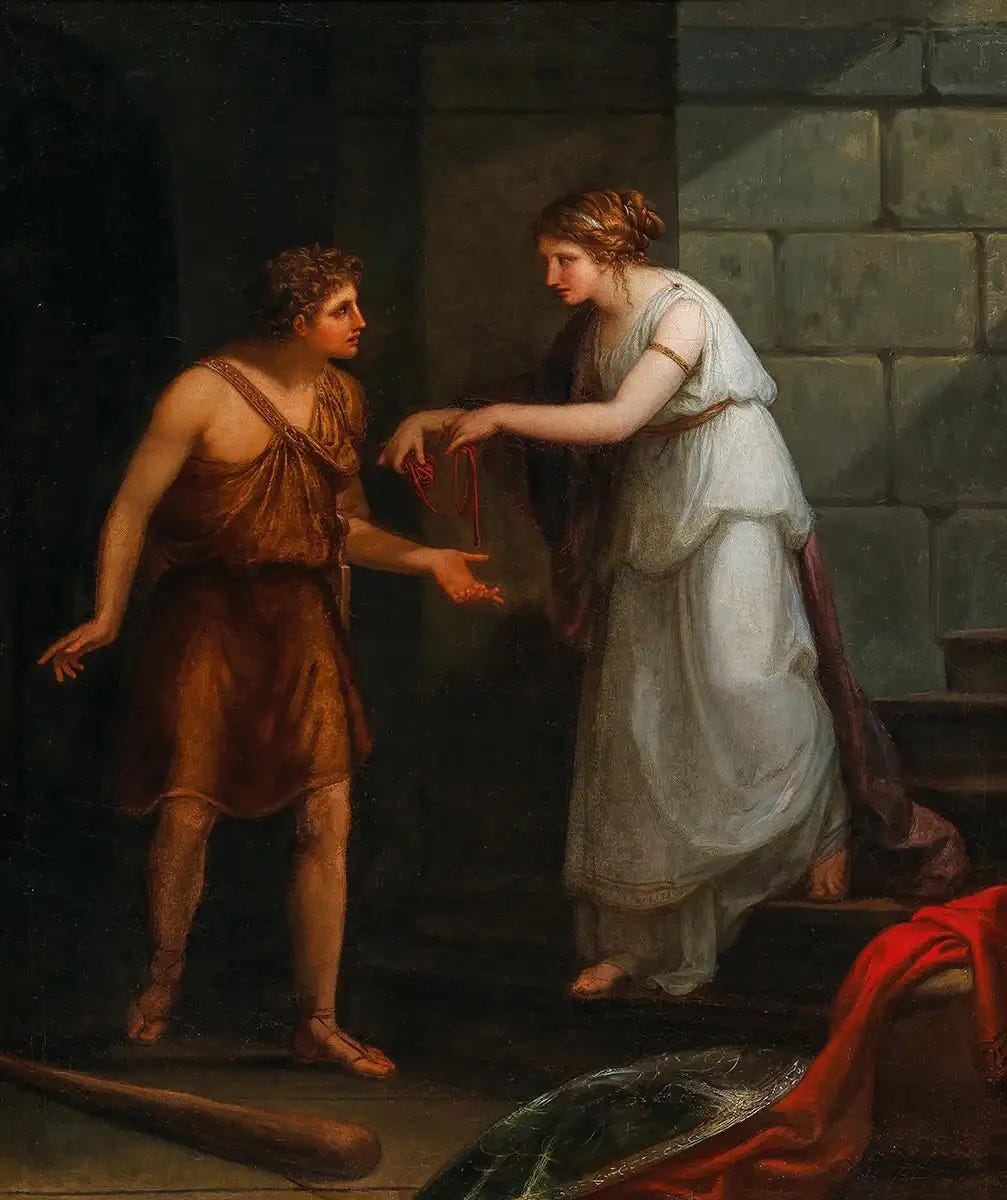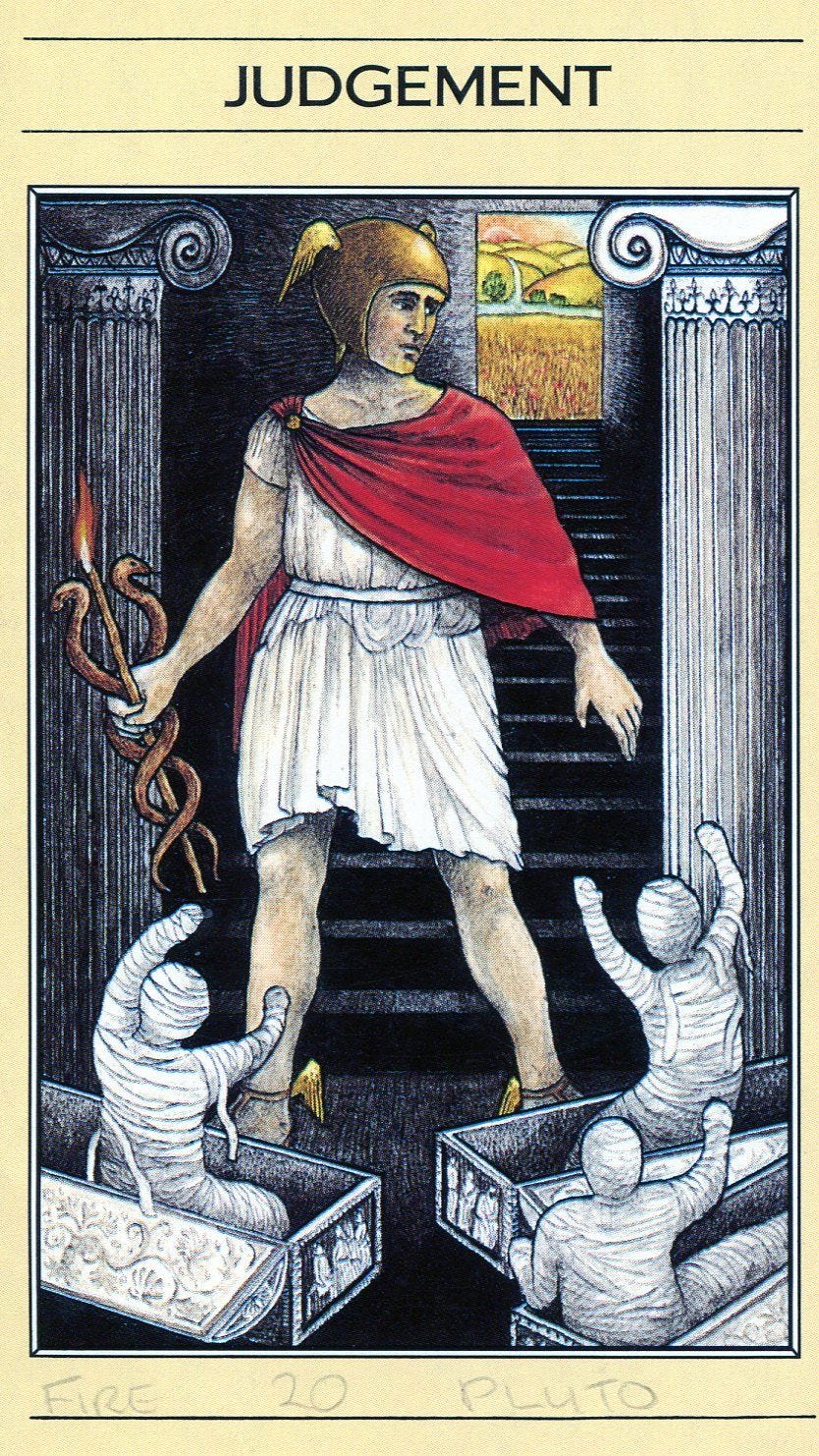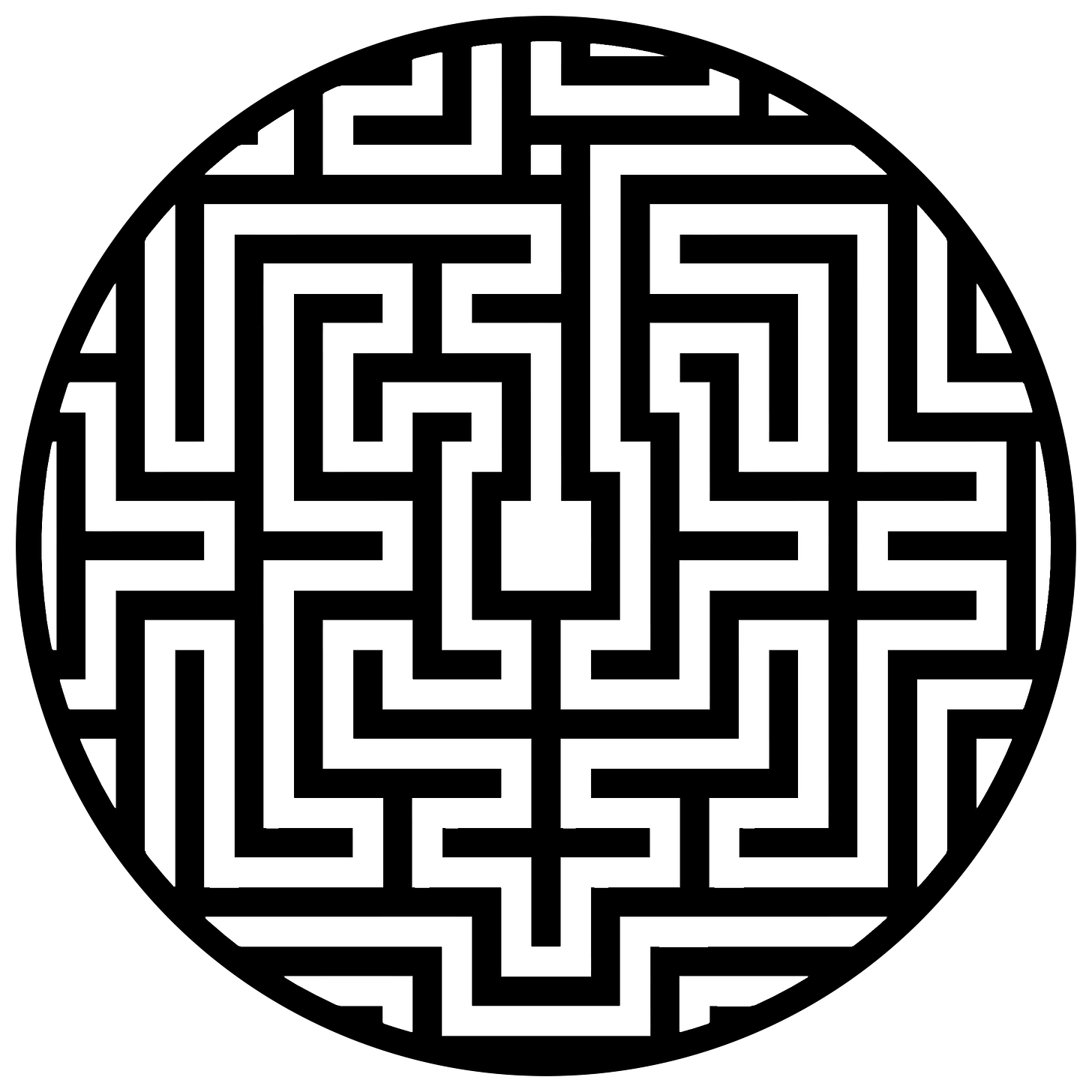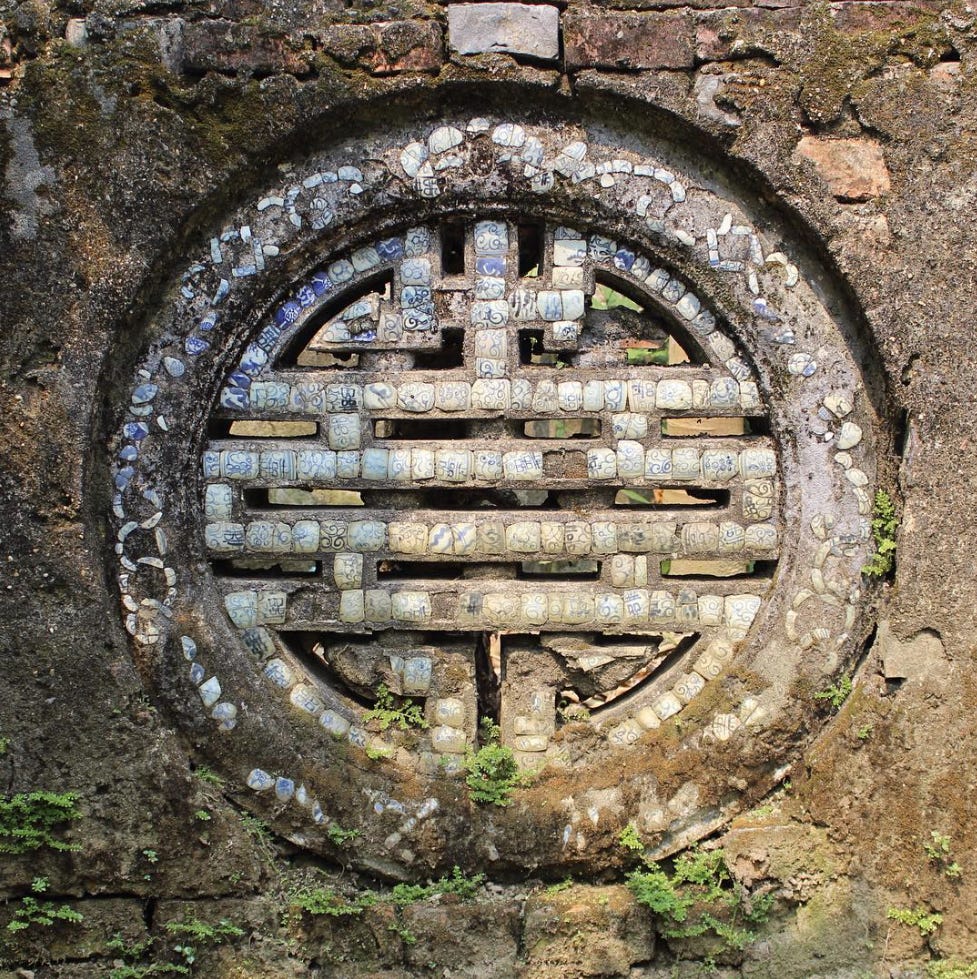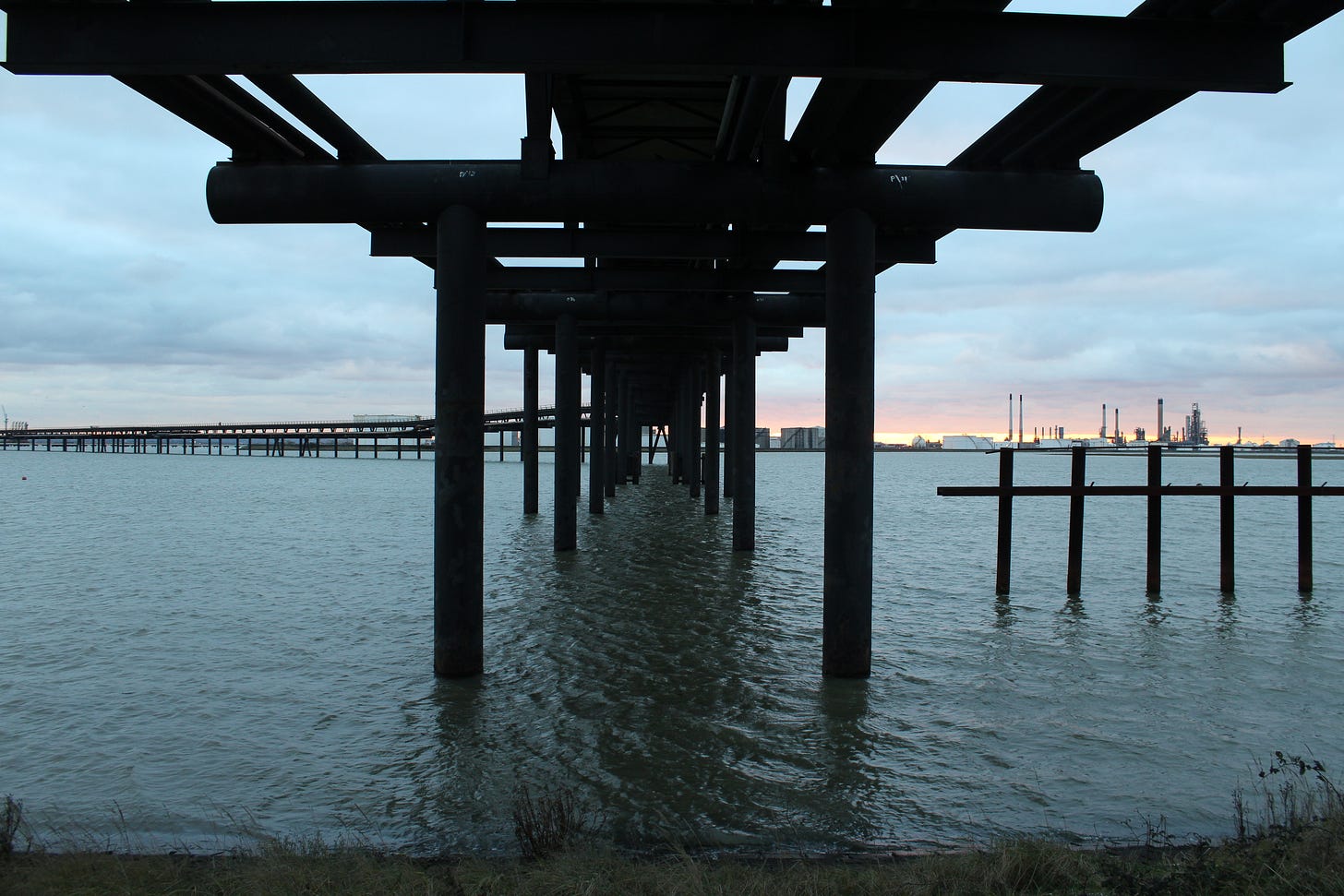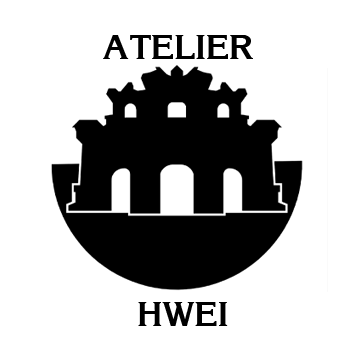ARIADNE'S THREAD #1
Praxis makes praefect
Ariadne’s thread #1
Each month I publish Latest from the Labyrinth to update subscribers on my personal creative output. As noted in previous editions, this has been hindered by work, family life and mental health considerations and it’s only just getting back on track.
The period has not been entirely unproductive, however: at least in an interior sense. I’ve been thinking about things and doing much pondering.
This post is a sort of memoir: it is an introduction to an ongoing series of posts I will be publishing parallel with Latest from the Labyrinth. The intention is to produce discursive pieces around topics of interest to me, that may or may not directly inform my RPG output but are certainly an indication of additional ingredients I’m adding to my pantry. The next Latest from the Labyrinth will follow shortly after this post, and thereafter fall on or close to the first of each month. Ariadne’s Thread, after today, will be published in the middle of the month.
Feel free to ignore: if this is drifting a little too far from the psychedelic, proto-neolithic old school content you signed up for, please be assured that you will still be receiving your monthly edition of Latest from the Labyrinth.
Thinking About Things and Doing Much Pondering
There is something pathetic about that string of words, and on previous occasions unmindful self-reflection has lead to self pity. This time things feel different: I’ve enjoyed perambulating through this interior. Its catacombs and mazes, and occasional sweeping vistas have been comforting rather than terrifying, though lit by an eternal incandescent lamp and attendant on/off switch.
The world within is a landscape populated by entities united in shared ambition: to walk free of the prison I have built around them, to bask in the light of the external world. But this desire is conflicted: for while the urge to be free is potent, the sun’s rays bring with them something that induces fear.
Judgement
Thus these entities are torn. It is an old dichotomy: would you rather be a hungry free man or a well-fed slave? Perhaps that is too simplistic, and it is closer to how Roland Barthes once described fashion: as the conflict between the need to be clothed and the desire to be naked. They all yearn to walk brazenly before the light of the sun, and it is my own petit-bourgeois prudishness that feels the need to continue their further incarceration.
Until this dichotomy is reconciled I remain at an impasse, and to occupy the time I have created a third place, where those prisoners of my intellect can mingle and exercise, plot elaborate escapes and trade cigarettes.
This is that third space: a thread woven by Ariadne herself.
Labyrinths
I returned to London in 2002, having fled the town of my birth in the ostensible pursuit of someone I loved. It was an ostensible pursuit as she did not live in London, and while I could further pretend that on my way to finding her London had ensnared me, the truth was I was at the mercy of an invisible current, a passenger through my own life. A friend had taken over a small bar in Margaret Thatcher’s former constituency (of all places), and had offered me a job as his assistant.
Here I continued to develop a skill I had been honing for a few years: extracting interesting stories from alcoholic old men. One of the less old (and slightly less alcoholic) men had ignited my curiosity regarding the work of Jorge Luis Borges with the (upon reflection) ill-informed assertion that he was “the Argentinian Kafka”. I hurried to a bookstore on my next day off, purchased Ficciones, and promptly left it on the tube.
Thus began my never-ending ordeal of buying, losing and re-buying books which I have grown to accept as the primary way by which I share literature with the world.
Labyrinth
There exists a weird distinction in the English language between “maze” and “labyrinth”, one whose origins are both spurious and antiquarian, enabling contemporary usage to trump original meaning. In “proper” contemporary use a labyrinth describes a unicursal route: though it may twist and turn and fold back on itself, there is no “wrong way”. It is a railroad, not a sandbox: the destination is always at the other end. A maze describes a multicursal route, within which there may be multiple dead-ends and/or alternative routes to the centre.
This distinction is spurious because the Ur labyrinth—i.e. that which was created by Daedalus to house the Minotaur, into which Theseus and Ariadne delved—would have to be multicursal, else whyfor the ball of twine? There’s no getting lost in a unicursal maze when your choice of movement is “forwards” or “backwards”.
“Aha!” cry the pedants, “why then do you use the St Omer labyrinth for your blog? It is a unicursal labyrinth is it not? Hmm? Hmm?”
To which I reply: “Aha! Look upon my works and weep, for they reveal your own innate biases! Why do you assume the route through the maze is white? If it were the black route, then we would witness a unicursal maze, like that which was crafted by Daedalus! Aha!”
So then the question emerges: is the inverse of a unicursal maze always multicursal?
Alone in the Labyrinth
I left London 13 years later, this time fleeing someone(s) I loved rather than in vague pursuit of them and, as I had done years before, found myself wondering where I was going. This time I didn’t have any drunk old men on hand to share their wisdom and/or favourite writers. Alone in Saigon I channelled the ghosts of old conversations, replaying episodes from my past out of boredom. It’s amazing what you thought you’d forgotten.
A friend with an interest in animation introduced me to Yume Nikki, a surreal PC game built with the RPG Maker engine, but along the way my clumsy google-fu I accidentally stumbled upon Ewan Cluney’s solo RPG Hikkikomori. There’s much said about the utility of the physical library for serendipitous learning, but the power of poor googling is rarely expounded. One for later (all learning is psychogeography).
Long story short, I found myself revisiting latency-stage distractions on two fronts: creating Japanese style CRPGs on my PC while playing solo analog RPGS. It was perhaps inevitable that this eventually led to analogue tabletop design (which can also be a form of solitary play), and the blog began as a record of those activities.
The blog’s name was inspired by the fact that I was alone in my pursuits and that the planned output was also intended to be for similarly isolated individuals. But it was also a reflection of my own status as a foreigner in Vietnam’s largest city. I lived alone and had not made any real friends. I drank and I smoked and I rode a tiny motorbike around the city at night, trying to make sense of its geography. The labyrinth then could be seen as Saigon, but it was also G+, and it was also the interior landscape.
City of Ghosts, City of Walls
A few months into my stay in Saigon/HCMC I was recalled by my employer to the ancient capital, Hue. Once again I was adrift, and seemingly happy to leave my fate to others… but again my indifference may have been my saving grace. I was rotting in the southern city, literally wasting away. Returning to Hue spared me a sorry fate.
As well as rekindling old friendships and making new ones, I was also looking upon the wet ruin with fresh eyes and in a different light. My game projects (and the blog) were set to one side while I explored the labyrinths of brick and stone, and Psychocartography was briefly revived. I’d started a new relationship and I had a dog. I was in a labyrinth, but no longer alone.
I’m not sure where I first the phrase City of Ghosts, but it was definitely in relation to the coastal Necropolis to the east of Hue proper, An Bằng. This is a curious landmark in and of itself, comprising brightly coloured contemporary tombs in good repair, bought by and for Vietnamese exiles. The call of the homeland must be strong, for there are many bones now buried in the sand that could have remained in Australia or America or elsewhere. Something of the exile’s tragedy clearly seeped through into PARIAH, not least the initial drafts which was initially titled City of Ghosts.
But the inspiration for would become the City of Ghosts campaign came from Hue’s central citadel. The combination of walled gardens, concentric moats and an asymmetric grid create a multicursal maze that also possesses a firm hierarchy. Indeed, more than one local I’ve spoken to has speculated that the repeated motifs and subtle maze-like qualities contributed to the difficulty the Americans faced in recapturing the citadel following 1968’s Tet offensive. If you wanted an entirely inaccurate depiction of this battle, please enjoy Full Metal Jacket with an understanding that you are being entertained, not educated. I’ve blogged about the Battle of Hue before and I plan on revisiting Kubrick in the future, but for now I want to introduce you to a personal side to that story that has emerged in more recent times.
Before we get to that, my city of walls was also Anthony Bourdain’s City of Ghosts. Bourdain so loved Hue that he gave us a whole episode on his “first love”, superior to the more widely known meal he shared in a later episode in Hanoi with President Obama. Given Bourdain’s ultimate fate it is heartbreaking to see him drinking a can of huda and eating Bun Thit Nuong outside Dong Ba market, a big smile on his face, declaring himself to be at his happiest. He maybe should have stayed there, and given that all moments are eternal he did, but he’ll always be trapped in another one, and that is a loss we all share.
To Bourdain, the whole of Hue was a City of Ghosts: ghosts of colonialism, of war, of a decadent monarchy… all of which haunt the city’s cuisine. I didn’t hear this interpretation until long after Jef Cox had completed the cover for the (still unpublished) second volume of PARIAH, so it was a noise thread to connect.
Canvey Island
Speaking of threads… all the ones which dragged me here are tangled up around the pier…
If you follow the above link back to my Psychocartograhpy post(s) about Hue and Kubrick you will find a link back to a landscape architect named Struan Brown, a former classmate of mine at the University of Greenwich. In a curious act of sorcery, Struan’s master’s project in London Docklands had anticipated my move to Hue, and part of the “generative text” was an American (military) ordnance survey of Hue overlaying a contemporary map of London’s docklands. For those without the time or energy to investigate further, this creative juxtaposition was inspired by Kubrick’s movie Full Metal Jacket. During the 1980s it was both politically and financially expedient to use a post industrial landscape in the UK as a stand-in for the former capital of the Nguyen dynasty. Kubrick is an almost totemic figure within conspiracy circles, and I fear it would be exhausting to investigate this very unusual and deliberate creative decision at this point, so I’m leaving this fact here as a placeholder.
Of course my decision to travel to Vietnam was not shaped by Struan Brown’s exploration(s) of the lateral relationship betwixt Hue and London's docklands. I only remark upon this coincidence because the respective creative work of Struan and I further is entwined by another locale, a site that would later facilitate my discovery of another Brighton-based creative perhaps more familiar to the RPG crowd. I am talking (of course) about Canvey Island, an area of largely reclaimed land directly abutting the southeast Essex coast, about 15 miles from my place of birth. It was also the site of my father’s alleged game of football with David Bowie, and my mother’s mysterious first marriage.
In 2013 I began to design CHAIN ROCK COLONY, a project that excited but ultimately disappointed my tutors. In 2014 I was forced to re-exhibit the project alongside the next postgraduate contingent, including Struan, who had decided to also use Canvey Island as the site of his final landscape architecture masters project.
Thus my fate was sealed, and to Hue I was exiled.
Lockdown & Cthuluscene
The collage technique in cinema and literature has been employed to transform the mundane narration of a series of events into something dynamic and vital: thus we can interrupt this tiresome narration of THINGS WHICH HAPPENED TO A MAN with a daring jump cut six years ahead of the previous scene. It is now 2020 and our protagonist is wandering the streets of Brighton, one month after his return to UK from an extended exile in Vietnam.
An old/new job in an old/new town, with old/new friends and old/new enemies: there’s another tale in the threads that led him back to Brighton & Hove, but these will probably be saved for the director’s commentary on the Blu Ray release, purchased by approximately 5 people. Later repackaged in a Kickstarter, 90% of backers chose that option.
COVID is rapping gently at the chamber door, a cartoon spectre in a two-dollar Halloween outfit, a figure of fun. “Look at the funny Asians with their facemasks, just like SARS!” we joke, pretending to cough into our elbow-pits, unaware we’re weeks away house arrest, our only respite standing on our doorsteps at state-allotted times and applauding ambulances. A small gallery with an eye-catching window display is exhibiting David Blandy & Claire Barrett’s Cthuluscene. The name alone is enough to draw the man in, but once inside he’s captivated by the parallel work, The World After.
Our hero is captivated for three reasons. Firstly, the promotional material emphasises that this work was commissioned by Focal Point Gallery, based in the town of the Main Character’s birth, Southend-on-Sea Secondly, this work explores Canvey Island, a site previously connected to his family history and student projects: just a few weeks ago, during an interview, he had shared his naive designs with the man who would become his employer. Third, one of the outputs of this work was a tabletop RPG.
All of this is enough to encourage our hero and a friend to attend a talk by the artist the following week, during which the protagonist signs up to participate in a livestream game organised by New Geographies in which he and other members of the public participate in a game of the World After run by the artist. Though aware of Critical Role, Acquisitions Incorporated and Dice, Camera, Action! this medium still feels fresh and new: he has no idea how the next year will transform livestream RPGs into a shambling, bricolaged monstrosity.
Atelier Hwei
I was already working on PARIAH when I stumbled upon David Blandy’s work, and continued to work on the Kickstarter as the world as we knew it grew weirder and weirder throughout 2020. When the time came to print, I decided to publish the work under the name Sofinho: this was the name by which I had moved through online TTRPG spaces since 2012 (and again, there’s another boring origin story to that one, incorporating West Ham United and Fernando Pessoa) and it felt natural to continue to credit that name with the work I was producing. It struck me that I should also have some kind of publishing imprint, and I went with Atelier Hwei.
The vowel sound at the end of each word is supposed to rhyme, following the British English pronunciation of atelier and the typical [western] tourist pronunciation of the Vietnamese city of Huế:
/əˈtel.i.eɪ/ /hweɪ/
Find your own way back
By now you’ll be wondering what this all means, what it’s all for, and why you’re here. Like so many aimless rambles, it ends with a lukewarm mug of tea in a low-quality establishment with more questions and answers.
But it’s all there, isn’t it? You may not know where you are but you know exactly where you’ve been…
Just follow the thread: you can find your own way back.
Links
Psychocartography posts on Hue: https://psychocartography.blogspot.com/search/label/hue
Struan Brown Beckton/Hue juxtaposition: https://struanbrown.blogspot.com/2013/12/beckton-gas-works.html
Cthuluscene: https://davidblandy.co.uk/cthuluscene
The World After: https://davidblandy.co.uk/the-world-after



